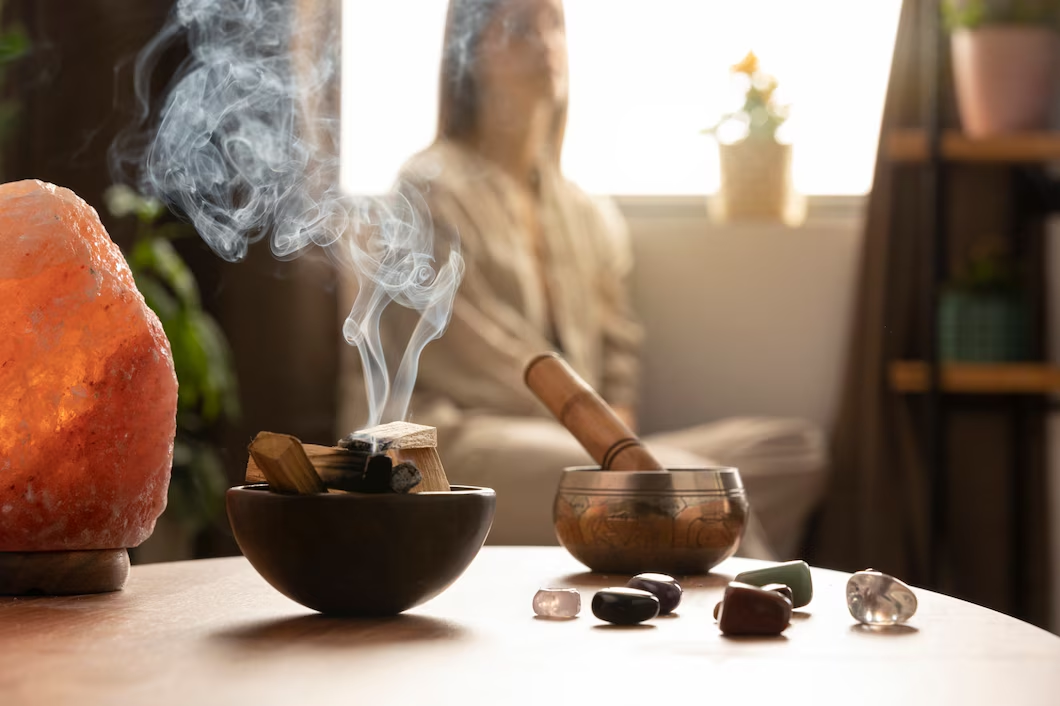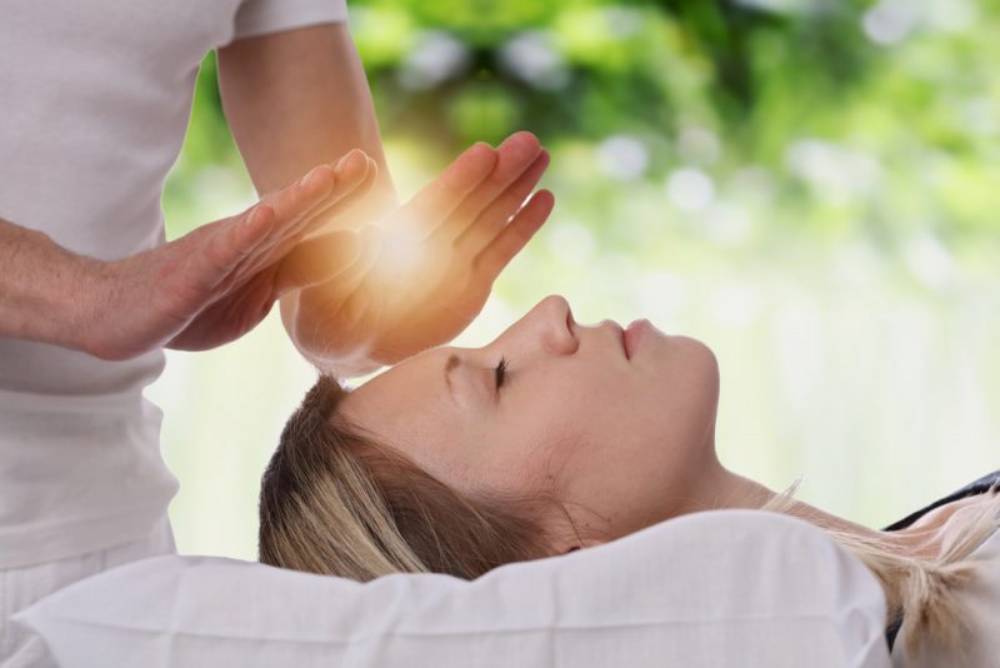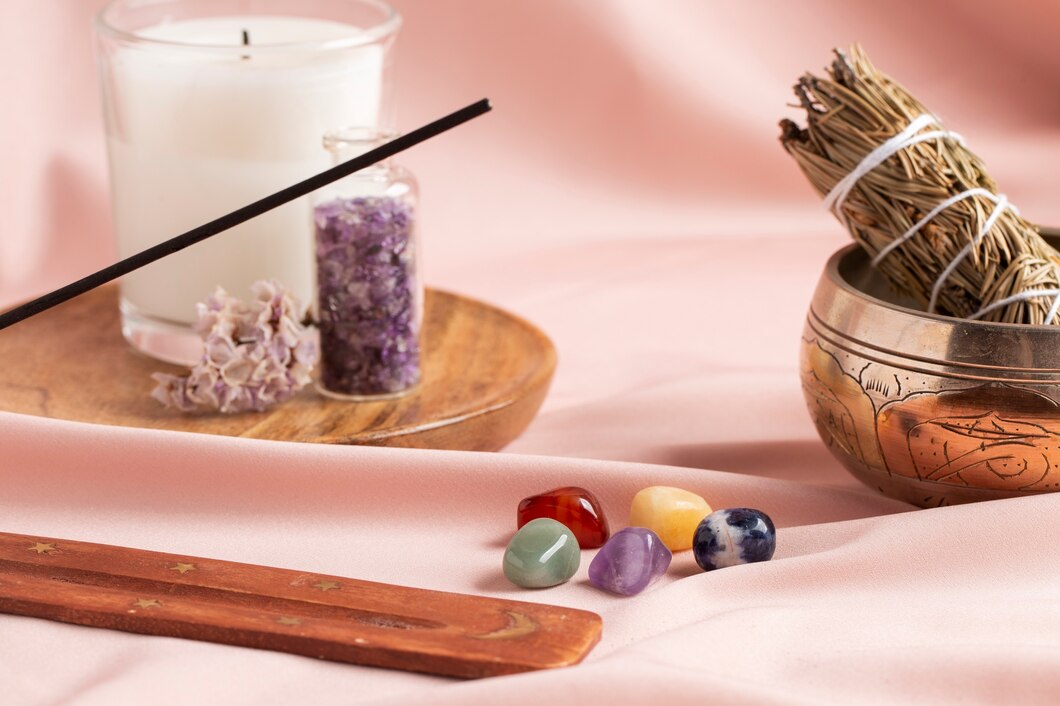How Reiki Energy Healing Works & Its Benefits
Reiki is an ancient Japanese practice that promotes healing through the use of energy. It’s based on the idea that a life force flows through all living things. When this energy is blocked or unbalanced, it can cause physical, emotional, or spiritual problems. Reiki energy healing seeks to bring balance and harmony. The practitioner channels

Reiki is an ancient Japanese practice that promotes healing through the use of energy. It’s based on the idea that a life force flows through all living things. When this energy is blocked or unbalanced, it can cause physical, emotional, or spiritual problems. Reiki energy healing seeks to bring balance and harmony. The practitioner channels energy to the recipient, which helps promote well-being, gratitude, and healing. This guide will help you understand how Reiki works, its benefits, and how you can integrate this practice into your life.
How Reiki Energy Healing Works

Reiki energy healing is an alternative therapy. It helps promote relaxation and reduce stress. Also, it supports healing by restoring balance to the body’s energy system. Practitioners think energy imbalances can lead to physical or emotional problems. They believe that clearing these blockages helps the body heal itself. Reiki transfers energy from the practitioner to the recipient. This can happen through hands-on or hands-off techniques. It focuses on specific body areas and energy centres called chakras.
Pro Tip: It’s important to approach Reiki with an open mind and heart. Trust the process and be patient, as the benefits of Reiki can unfold gradually over time.
Understanding the Principles of Reiki Energy Healing
Reiki is based on five key principles. These principles help both the practitioner and the recipient. They encourage healing and support a positive, balanced mindset. These principles serve as affirmations that help to create an environment conducive to healing:
- Just for today, I will not be angry.
- Just for today, I will not worry.
- Just for today, I will be grateful.
- Just for today, I will do my work honestly.
- Just for today, I will be kind to every living thing.
These principles help shift the focus from negative emotions and stressors to a more grounded and healing mindset. Using these affirmations can help Reiki practitioners and recipients feel more balanced and calm. This improves their emotional and mental well-being.
The Seven Chakras and Their Role in Reiki Healing
Reiki focuses on balancing the body’s energy system, which is thought to be composed of seven main energy centres known as chakras. Each chakra is associated with specific aspects of physical, emotional, and spiritual health. When these chakras are balanced, and energy flows freely, the body experiences improved well-being. If a chakra becomes blocked or imbalanced, it can manifest as physical illness or emotional distress. Reiki aims to restore balance to these chakras by clearing energy blockages and encouraging the natural flow of energy.
Here are the seven main chakras and their associated functions:
- Root Chakra (Muladhara) – Associated with grounding, security, and stability. This chakra governs our basic survival needs, including food, shelter, and safety.
- Sacral Chakra (Svadhisthana) – Connected to creativity, emotional balance, and sexual energy. This chakra influences our ability to experience pleasure and connect with others.
- Solar Plexus Chakra (Manipura) – Tied to personal power, confidence, and self-esteem. It governs our ability to make decisions and assert ourselves.
- Heart Chakra (Anahata) – Linked to love, compassion, and emotional balance. This chakra is the centre of our relationships and our ability to love and forgive.
- Throat Chakra (Vishuddha) – Associated with communication, self-expression, and truth. This chakra influences our ability to express ourselves honestly and clearly.
- Third Eye Chakra (Ajna) – Connected to intuition, perception, and mental clarity. This chakra is linked to our ability to understand and perceive beyond the physical realm.
- Crown Chakra (Sahasrara) – Tied to spiritual connection and enlightenment. This chakra governs our relationship with the divine and our sense of purpose in life.
Reiki directs energy to specific areas. This helps remove blockages and restore balance to each chakra. As a result, individuals can experience greater harmony in their body and mind.
Reiki Healing Techniques: Hands-On, Hands-Off, and Distance Healing
There are three main techniques used in Reiki healing: hands-on, hands-off, and distance healing. Each method is designed to channel energy and promote healing in different ways.
Hands-On Healing
In hands-on Reiki, the practitioner gently places their hands on specific areas of the recipient’s body. This technique allows energy to flow directly from the practitioner to the recipient. Hands-on healing works well for physical problems like pain or tension. It also helps you relax deeply.
Hands-Off Healing
In hands-off Reiki, the practitioner does not physically touch the recipient. The practitioner holds their hands just above the body. This lets energy flow from their hands into the recipient’s energy field. This technique works well for people who don’t like to be touched. It’s especially good for emotional and spiritual healing.
Distance Reiki
Reiki is not limited by physical proximity, which means that distance Reiki can be performed remotely. The practitioner sends healing energy to the recipient. They use visualisation and intention to connect with the recipient’s energy field, regardless of distance. Distance Reiki helps people who can’t go to in-person sessions. It enables healing to occur anytime and anywhere.
The Benefits of Reiki Healing
Reiki healing offers a wide range of benefits for the mind, body, and spirit. Reiki helps heal the body by balancing its energy system. This leads to better physical health, improved emotions, and spiritual growth. Below are some of the key benefits of Reiki:
1. Promotes Deep Relaxation and Stress Reduction
Reiki helps calm the nervous system, reduces anxiety, and promotes deep relaxation. Many people feel deep peace and calm after a Reiki session. This can help with sleep and emotional balance. By reducing stress, Reiki helps the body maintain optimal health and healing.
2. Enhances Emotional Well-Being
Reiki helps clear emotional blockages and balance energy. This can relieve anxiety, depression, and emotional distress. It fosters emotional resilience, mental clarity, and a greater sense of inner peace. Reiki is often used as a complementary therapy for trauma recovery and emotional healing.
3. Boosts Physical Healing and Pain Relief
Reiki has been shown to speed up recovery from injuries and illnesses, promote the healing of wounds, and reduce chronic pain. It also strengthens the immune system and supports overall physical well-being. Many hospitals and wellness centres use Reiki in their treatment plans. This is especially true for post-surgical recovery and pain management.
4. Supports Spiritual Growth and Awareness
Reiki helps people grow spiritually. It connects them with their higher selves and life purpose. It boosts self-awareness, intuition, and insight. This helps people find deeper spiritual fulfilment and clarity. Many people use Reiki as a tool for meditation and personal development
5. Improves Sleep and Energy Levels
Reiki helps regulate sleep patterns and restore energy balance in the body. It is particularly beneficial for individuals who suffer from insomnia or chronic fatigue. Reiki clears stagnant energy and promotes relaxation. This leads to better sleep and more vitality.
6. Strengthens the Body’s Detoxification Process
Reiki helps the body detox naturally. This process removes toxins and boosts overall health. This benefit helps people make lifestyle changes. This includes those adopting healthier diets or quitting smoking. Reiki supports the body’s natural ability to cleanse itself and promote well-being.
How to Integrate Reiki Healing into Your Daily Life
To fully benefit from Reiki, it’s important to integrate the practice into your daily routine. Here are some practical ways to incorporate Reiki into your life:
Quick Guide: Steps to Integrate Reiki into Your Routine
- Practice Self-Reiki: Learn basic hand positions to practise Reiki on yourself. You can do this in the morning or before bed to promote relaxation and energy balance. Self-Reiki is an easy way to maintain well-being between professional sessions.
- Book Regular Reiki Sessions: To get the best results, book sessions with a qualified practitioner. Many people find it helpful to have weekly or monthly sessions. These sessions help keep their energy in balance and support emotional health.
- Combine Reiki with Mindfulness and Meditation: Reiki pairs beautifully with mindfulness practices such as meditation. Combining both can enhance emotional healing, mental clarity, and spiritual growth. Guided meditation with Reiki allows you to focus more deeply on your personal growth and healing.
- Use Reiki-Infused Crystals and Essential Oils: You can transfer Reiki energy to crystals and essential oils. These can help keep positive energy flowing in your home or workspace. You can charge crystals like amethyst, quartz, and selenite with Reiki. Then, place them around your home. They help with emotional healing and energy flow.
- Keep a Reiki Journal: Track your progress by keeping a Reiki journal. Write down any insights, feelings, or physical changes you experience after sessions. Journaling helps you stay mindful of your healing journey and allows you to reflect on how Reiki is positively affecting your life.
The Scientific Perspective on Reiki Healing
Reiki is an alternative therapy. Recently, research has started to look into its possible benefits. Reiki can help lower stress, anxiety, and pain. This is especially true for people with chronic health issues. Hospitals and healthcare providers are using Reiki more often. They see it as a way to support patients’ healing and overall wellness.
A study in the Journal of Alternative and Complementary Medicine found that Reiki can lower pain and anxiety in patients after surgery. The National Center for Complementary and Integrative Health (NCCIH) says that Reiki can boost mood and improve overall well-being. This is especially true for patients getting treatment for long-term health issues.
Frequently Asked Questions (FAQs) About Reiki Healing
What is Reiki energy healing?
Reiki is a healing practice. It uses universal life force energy. This energy promotes physical, emotional, and spiritual well-being. It can happen with or without touch. It helps with relaxation, pain relief, emotional healing, and spiritual growth.
How does Reiki work?
Reiki channels energy from the practitioner to the recipient. It focuses on specific body areas and energy centres, known as chakras. This helps clear blockages and restore balance, allowing the body to heal naturally.
Is Reiki safe?
Yes, Reiki is a safe and non-invasive therapy suitable for people of all ages and health conditions. It is a complementary treatment that can be used alongside other forms of therapy or medication.
Can I do Reiki on myself?
Yes, self-Reiki is a powerful practice that can be done at home. Learning basic hand positions helps you do Reiki on yourself. This promotes relaxation and keeps your energy balanced.
How often should I receive Reiki sessions?
The frequency of Reiki sessions depends on individual needs. Many people gain from weekly or monthly sessions. Even occasional sessions can help with relaxation and well-being.
Is Reiki scientifically proven to work?
While Reiki is still considered an alternative therapy, scientific research has shown promising results. Research shows that Reiki can lower stress, anxiety, and pain. It also boosts overall well-being, especially for those with chronic conditions. Some hospitals are now integrating Reiki into patient care.
Conclusion: Embracing Reiki for Holistic Wellness

Reiki energy healing provides a natural and holistic way to improve health. It emphasises the connection between the body, mind, and spirit. Reiki can help you find relaxation, emotional healing, or spiritual growth. It restores balance and harmony in your life. Add Reiki to your daily routine for great benefits. You’ll see better health, more energy, and improved emotional well-being.
Remember, Reiki is a practice that requires patience and consistency. Regular sessions, whether you practice on your own or with a pro, will help you enjoy the full benefits of this powerful energy healing. By embracing Reiki, you can unlock a deeper sense of balance, peace, and meaning in your life.